How Much is the Poland Minimum Wage 2024? Poland Occupations and Salaries 2024

How Much is the Poland Minimum Wage 2024? Poland Occupations and Salaries 2024. Poland is one of the most curious countries as a result of the researches made by those who want to go abroad. As such, Poland Minimum Wage 2024 How Much? is being wondered. Those who want to collect information about Poland Poland Occupations and Salaries 2023, Poland Cost of Living, Can you live on minimum wage in Poland? also investigates questions such as. Let’s learn all the curious things together …
How Much is the Poland Minimum Wage 2024
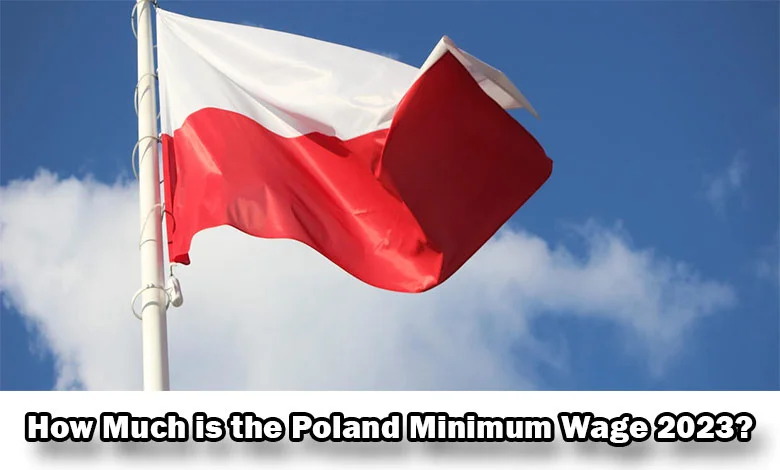
In this article for those who want to work abroad and those who are curious about the salaries of different countries, we will try to give information about Poland Minimum Wage 2023 and Poland cost of living, Poland sought-after professions and salaries 2023. After 2004, Poland, which is a European Country, has been ruled by the Polish Republican regime since 11 November 1918. Poland, which is the 9th largest country in the European Union in terms of population density, ranks 33rd in the world.
Working hours and days in Poland are maintained 5 days a week. On a daily basis, working hours are determined as 8 hours. Hours over 40 hours per week are processed into overtime wages. The use of PLN, its own currency, is common in Poland. Since job opportunities in Poland are high, many people want to work here. Apart from this, the number of factories in Poland is also quite high.
As a Polish job opportunity, it is possible to find a job easily in agriculture, service and industry. Here, employment in various fields such as accounting, electricity, engineering, construction is extremely high. In addition, hourly working paid jobs are also extremely popular in Poland. Before Poland 2023 minimum wage, the current minimum wage is € 619 as a result of the latest regulations and is 2.900 Polish Zloty.
Poland Occupations and Salaries 2024
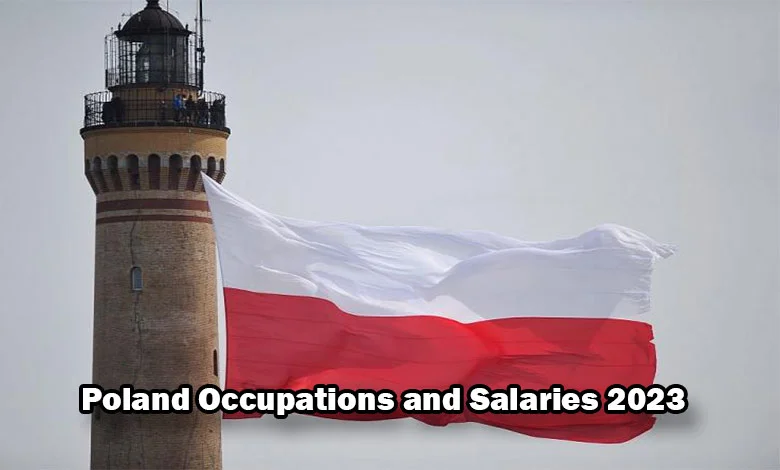
Occupations Average
Lowest Salary Average
Highest Salary
Woodworking Industrial Engineer. 1.200 € 2.300 €
Heavy Industry Labourer. 900 € 1.400 €
Heavy Vehicle Driver. 1.400 € 2.100 €
Coach, Sports Instructor. 1.400 € 2.700 €
Anthropologist 1.200 € 2.300 €
Car Mechanic 1.600 € 2.400 €
Archaeologist.. 1.200 € 2.300 €
Astronomy and Space Sciences. 1.800 € 3.600 €
Cook 1.800 € 2.700 €
Lawyer 1.400 € 2.700 €
Shoe Designer 1.200 € 2.300 €
Care and Companionship Worker. 1.200 € 1.700 €
Fisheries Technology Engineer. 1.200 € 2.300 €
Banker 1.200 € 2.300 €
Banking 1.200 € 2.300 €
Press and Publication. 1.200 € 2.300 €
Computer Engineer 1.600 € 3.200 €
Information Systems Engineer. 1.600 € 3.200 €
Biochemistry 1.400 € 2.700 €
Biologist 1.400 € 2.700 €
Biomedical Engineer 1.800 € 3.600 €
Bioengineering 1.400 € 2.700 €
Biosystems Engineer 1.400 € 2.700 €
Biotechnologist 1.600 € 3.200 €
Dishwasher 900 € 1.400 €
Environmental Engineer 1.200 € 2.300 €
Childminder 900 € 1.400 €
Child Development Specialist 1.200 € 2.300 €
Marine Science and Technology Engineer 1.200 € 2.300 €
Marine Transport Management Engineer 1.200 € 2.300 €
Warehouse Clerk 900 € 1.400 €
Leather Engineer 1.200 € 2.300 €
Dentist 1.800 € 3.600 €
Natural Gas Technician 1.200 € 1.700 €
Doctor 1.800 € 3.600 €
Doner Kebab Master 1.400 € 2.100 €
Economics and Finance Specialist 2.300 € 4.500 €
Economist 2.300 € 4.500 €
Electrical – Electronics Engineer 1.600 € 3.200 €
Electrical Engineer 1.400 € 2.700 €
Electrical Industrial Labourer 1.200 € 1.700 €
Electrical Technician 1.400 € 2.100 €
Electronics 1.200 € 1.700 €
Electronics Engineer 1.600 € 3.200 €
Electronics and Communication Engineer 1.400 € 2.700 €
Industrial Industrial Worker 900 € 1.400 €
Industrial Engineer 1.600 € 3.200 €
Industrial Machine Operator 900 € 1.400 €
Industrial Design Engineer 1.800 € 3.600 €
Industrial Designer 1.400 € 2.700 €
Energy Distribution Technician 1.400 € 2.100 €
Energy Systems Engineer 1.800 € 3.600 €
Occupational Therapy Specialist 1.400 € 2.700 €
Master Baker 1.600 € 2.400 €
Finance and Banking 1.400 € 2.700 €
Financier 1.600 € 3.200 €
Physics Engineer 2.300 € 4.500 €
Physicist 1.600 € 3.200 €
Physiotherapy and Rehabilitation Specialist 1.800 € 3.600 €
Forklift Operator 1.200 € 1.700 €
Photo and Video 1.200 € 2.300 €
Photography 1.200 € 2.300 €
Gastronomy and Culinary Arts 1.600 € 3.200 €
Journalist 1.600 € 3.200 €
Naval Architecture and Marine Engineering 1.400 € 2.700 €
Ship Captain 4.500 € 6.800 €
Marine Engineering Engineer 1.600 € 3.200 €
Ship Machinist Technician 2.700 € 4.100 €
Ship Technician 2.300 € 3.400 €
Genetics and Bioengineering 2.300 € 4.500 €
Geomatics Engineer 1.400 € 2.700 €
Food Engineer 1.200 € 2.300 €
Food Technologist 1.400 € 2.700 €
Visual Communication Designer 1.400 € 2.700 €
Graphic Designer 1.800 € 3.600 €
Public Relations and Advertising Specialist 1.200 € 2.300 €
Public Relations and Publicity 1.400 € 2.700 €
Surveying Engineer 1.200 € 2.300 €
Patient Carer 1.200 € 1.700 €
Aviation Electrical and Electronics Specialist 2.300 € 4.500 €
Aerospace Engineer 2.300 € 4.500 €
Animal Production and Technologies Specialist 2.300 € 4.500 €
Nurse 1.200 € 2.300 €
Hydrogeological Engineer 1.400 € 2.700 €
Interior Architect 1.600 € 3.200 €
Interior Architecture and Environmental Designer 1.600 € 3.200 €
Air Conditioning Technician 1.200 € 1.700 €
Economist 1.800 € 3.600 €
Communication and Designer 1.400 € 2.700 €
Human Resources Manager 1.400 € 2.700 €
Civil Engineer 1.200 € 2.300 €
Construction Technician 1.200 € 1.700 €
Statistician 2.300 € 4.500 €
Statistics and Computer Science Specialist 2.300 € 4.500 €
Construction Equipment Operator 900 € 1.400 €
Geophysical Engineer 1.200 € 2.300 €
Geological Engineer 1.200 € 2.300 €
Truck Driver 1.400 € 2.100 €
Cashier 800 € 1,100 €
Chemical Engineer 1.400 € 2.700 €
Chemist 1.600 € 3.200 €
Courier 900 € 1.400 €
Jewellery and Jewellery Designer 1.400 € 2.700 €
Logistics Manager 1.200 € 2.300 €
Mining Engineer 1.200 € 2.300 €
Shop Assistant 900 € 1.400 €
Mechanical Engineer 1.400 € 2.700 €
Machine Industry Worker 900 € 1.400 €
Machine Technician 1.200 € 1.700 €
Finance Expert 1.400 € 2.700 €
Materials Science and Engineering 1.400 € 2.700 €
Materials Science and Nanotechnology Engineer 1.200 € 2.300 €
Mathematics and Computer Science Specialist 1,800 € 3,600 €
Mathematician 1.800 € 3.600 €
Media and Communication 1.400 € 2.700 €
Mechanical Technician 1.200 € 1.700 €
Mechatronics Engineer 1.400 € 2.700 €
Metallurgical and Materials Engineer 1.400 € 2.700 €
Meteorological Engineer 1.400 € 2.700 €
Architect 1.600 € 3.200 €
Fashion Designer 1.800 € 3.600 €
Molecular Biology and Genetics 10.000 € 30.000 €
Molecular Biology and Genetics Specialist 2.300 € 4.500 €
Accountant and Finance Manager 1.600 € 3.200 €
Nuclear Energy Engineer 2.300 € 4.500 €
Audiologist 1.800 € 3.600 €
Forest Industry Engineer 1.200 € 2.300 €
Forest Engineer 1.200 € 2.300 €
Orthotics and Prosthetics Specialist 2.300 € 4.500 €
Hotel Attendant 1.400 € 2.100 €
Bus Driver 1.600 € 2.400 €
Automotive Engineer 1.600 € 3.200 €
Teacher 1.200 € 2.300 €
Private Security Officer 900 € 1.400 €
Private Sports Instructor 1.800 € 2.700 €
Pastry Master 1.600 € 2.400 €
Marketer 1.200 € 2.300 €
Petroleum and Natural Gas Engineer 1.800 € 3.600 €
Landscape Architect 1.600 € 3.200 €
Pita Master 1.400 € 2.100 €
Polymer Materials Engineer 1.400 € 2.700 €
Police Officer 1.400 € 2.100 €
Psychologist 1.600 € 3.200 €
Radio, Television and Cinema 1.400 € 2.700 €
Rail Systems Engineer 1.400 € 2.700 €
Guidance and Psychological Counsellor 1.400 € 2.700 €
Advertising 1.400 € 2.700 €
Health Coach 1.800 € 3.600 €
Health Technician 1.400 € 2.100 €
Art History 1.400 € 2.700 €
Plumber 1.200 € 1.700 €
Insurance and Risk Manager 1.600 € 3.200 €
Insurer 1.400 € 2.700 €
Cinema and Television 1.400 € 2.700 €
Sociologist 1.200 € 2.300 €
Aquaculture Engineer 1.200 € 2.300 €
Taxi Driver 1.400 € 2.100 €
Agricultural Machinery and Technology Engineer 1.200 € 2.300 €
Date 1.200 € 2.300 €
Field Crops Specialist 1.200 € 2.300 €
Textile Engineer 1.200 € 2.300 €
Textile Designer 1.200 € 2.300 €
Textile Technician 1.200 € 1.700 €
Cleaning Labourer 900 € 1.400 €
Clerk 900 € 1.300 €
Theatre Criticism and Dramaturgy 1.200 € 2.300 €
Soil Science and Plant Nutrition Specialist 1.400 € 2.700 €
Tourism Guide 1.600 € 3.200 €
Tobacco Expert 2.300 € 4.500 €
Aircraft Maintenance and Repair Specialist 2.700 € 5.400 €
Airframe and Engine Maintenance Specialist 2.700 € 5.400 €
Aircraft Engine Technician 2.700 € 4.100 €
Aircraft Pilot 6.800 € 10.200 €
Aircraft and Aviation Technician 2.300 € 3.400 €
International Trade Specialist 1.600 € 3.200 €
International Trade and Logistics 1.600 € 3.200 €
Aerospace and Satellite Engineer 2.300 € 4.500 €
Unskilled 800 € 1.200 €
Veterinarian 2.300 € 4.500 €
Crane Operator 1.600 € 2.400 €
Software Engineer 2.300 € 4.500 €
Agricultural Engineer Programmes 1.400 € 2.700
How Much Are 2024 House Rents in Poland?
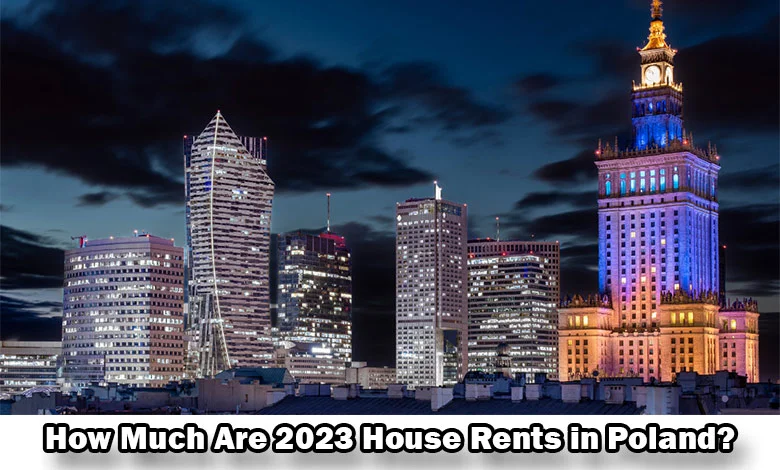
Since it is a country with high financial opportunities and purchasing power to live, house prices in Poland can be wondered. Perhaps the biggest financial burden of Poland can be seen as house rents. Because there is an average price of 2,200 Polish Zloty for studio apartments and 3,900 Polish Zloty for three-room houses in city centres. However, this average price is due to a very clear gap.
For example, in the city centre you can find a studio apartment for 1,400 zlotys as well as for 3,500 zlotys. Away from the city centre, house rents in Poland are a little more normal. While the average price for studio apartments is 1.700 Zloti, the average price for three-room houses is 3.000 Zloti.
How Much Are Car and Fuel Prices in Poland?
Car prices in Poland are still in circulation with the currency Polish Zloty. In the country, which is on the way to full membership of the European Union, it should be emphasised that the most affordable prices can be in question when we take the Euro equivalent as a basis.
Likewise, for example, when we take the average selling price for Toyota Corolla 1.6 as an example, we encounter 84,000 Polish Zloty. In this context, if we consider the Volkswagen Golf 1.4 sales price, we can see that the average price is 78,000 Polish Zloty. With such affordable vehicle prices, when you take a taxi, you will see 7 Zloty as the starting amount of the taximeter.
For each kilometre travelled by the taxi, the amount you need to pay is only 2.50 Zloty. Which corresponds to 0.53 Euro on average. We can say that these affordable amounts continue for petrol prices in Poland. Because the litre of petrol corresponds to 5 Polish Zloty and approximately € 1.10.
What are the Working Conditions in Poland?
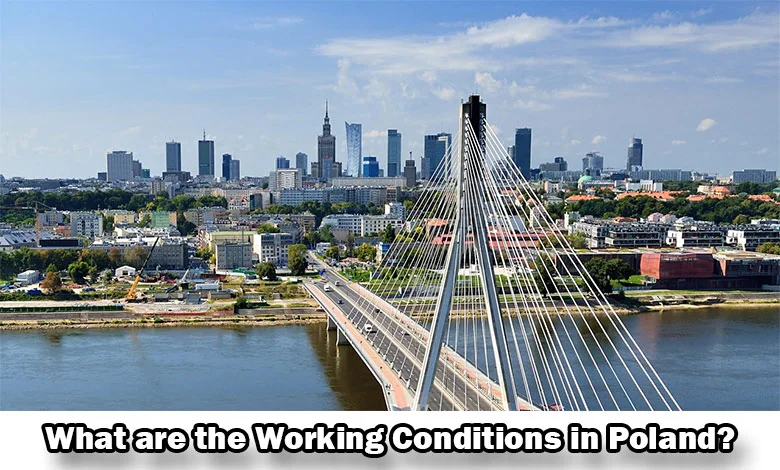
Poland working conditions are similar to other European countries. Here, the weekly working hour is determined as 40 hours. The working hours of employees working 6 days a week can be a maximum of 48 hours. Working hours over the periods specified here are considered overtime. Employers have to pay double the wage for overtime. Therefore, employers need to adjust the working hours of employees well.
In Poland, located in the east of Europe, employees are entitled to 20 days of annual leave. If employees have been working for more than 10 years, their annual leave increases to 26 days. Although working conditions may seem favourable at first glance, there are still illegal workers here. Illegal workers are employed for longer than the specified periods and may be paid lower wages.
However, thanks to Poland’s rapprochement with the EU in recent years, it can be stated that such negativities have decreased significantly.
Job Opportunities in Poland
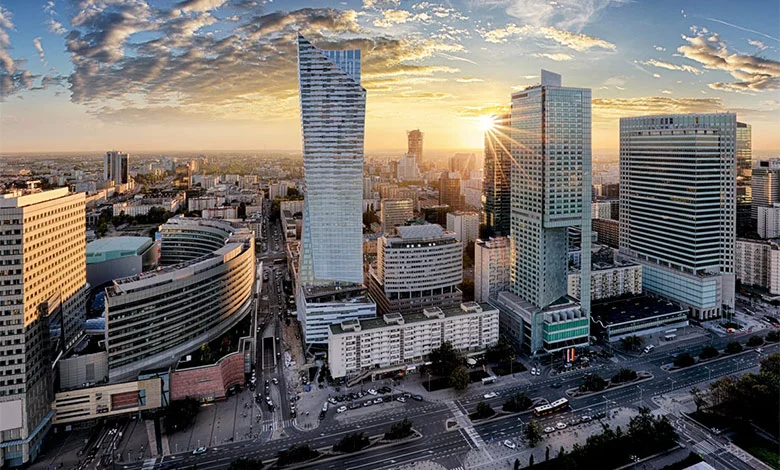
Poland is one of the countries that stand out with its cheap labour force. Even though the minimum wage is €627, considering that the average minimum wage in other European countries is €1,300, it will be seen how advantageous it is in terms of labour force. This situation has caused some important factories to move to Poland.
The cheap labour here and the increasing number of factories have led to a significant decrease in unemployment. The unemployment rate in the country is 5.80 per cent. This rate is quite low and is an important data showing that there are many job opportunities in the country.
People who want to live, work and find a job in Poland focus on the question of which professions can I find a job in Poland. Science, technology, engineering and computing are among the open positions in Poland.
It is possible to find a job in the field of engineering in Poland, where there are many types of engineering. In this context, he can work as an environmental engineer and food engineer. In addition, it is possible to be in active working life as a genetic engineer, energy engineer, mechanical engineer, industrial engineer, electronic engineer, computer engineer, electrical engineer, which are other engineering branches.
People who want to work in the finance sector and reflect their experience in this field to their work must graduate from the relevant departments. In this context, it is possible to work in a bank as a banker. On the other hand, insurance and finance employees are known as the positions that foreigners living in Poland will choose.
Occupations in Poland?
People who have managerial qualifications and who have previously worked as managers can work as mid-level managers and senior managers in various institutions according to their experience. Management is one of the important positions in terms of both salary and career. In addition, it is possible to find jobs in positions such as labourer, crane dozer operator, worker, long-distance driver, construction worker, etc. that do not require undergraduate education.
There are some occupational groups that require expertise and experience, and these occupations are popular in Poland as in Turkey. Natural gas technician, electrical technician, machine technician, plumber, technician, plumber are among the positions mentioned.
If a cosy and comfortable job is desired in the food sector, it is possible to work as a pita master, baker and cook. In addition, interior designer, architect, software engineer, veterinarian, dietician; It is among the high-paid professional groups. People who have completed their undergraduate education in the field of law and want to train themselves in this field can become lawyers or judges.
Grocery Prices in Poland 2024
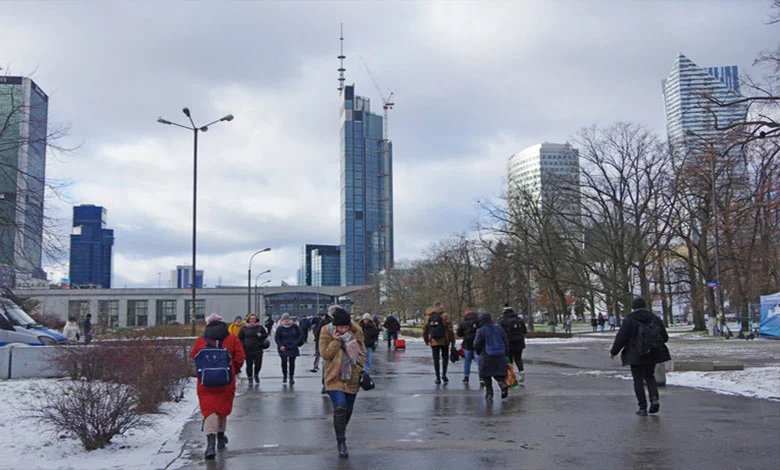
Nutrition and food costs in Poland are given below.
POLAND RESTAURANT PRICES PRICE
Cheap restaurant food 25 PLN
Meal for 2 persons in a mid-range restaurant PLN 120.00
Espresso coffee 6.50 PLN
Water (0.33 L) PLN 3.70
Carbonated drink (cola, soda, etc.) (0.33 L) PLN 4.50
Cheeseburger (fastfood) PLN 6.00
Imported beer (0.33 L) PLN 8.00
Burger King / McDonalds etc. PLN 20.00
Average market prices in Poland are given below.
POLAND MARKET PRICES PRICE
Milk (1 litre). PLN 2.45
Bread (500 g). PLN 2.64
Eggs (12 pcs.). 6.28 PLN
Local cheese (1 kg). 21.47 PLN
Water (1.5 Litres). PLN 1.86
Chicken breast (boneless and skinless 1 kg). PLN 15.55
Apple (1 kg). PLN 2.72
Tomatoes (1 kg). PLN 4.78
Banana (1 kg) PLN 4.34
Oranges (1 kg) PLN 4.46
Potatoes ( 1 kg) PLN 1.66
Onion (1 kg) PLN 1.96
Lettuce (1 pc / vineyard) PLN 2.64
Steak (1 kg red meat) PLN 31.34
Local beer (0.5 litre bottle) PLN 2.92
The average grocery prices in Poland are cheaper than in other European countries (France, England, etc.).
The average grocery expenses of people living in Poland vary between 300 – 600 PLN. The grocery expenses of people living in Poland also vary according to the number of people and living standards. The average living expenses of the person or persons living in Warsaw, Poland are given below. (Expenses such as house rent, natural gas, electricity, internet and water are included.)
NUMBER OF PEOPLE PRICE
1 person PLN 5050 – 5150
Family of 4 PLN 5300 – 5500
The average living expenses of a person and a family of 4 living in Krakow, Poland are given below. (Expenses such as house rent, natural gas, electricity, internet and water are included.)
NUMBER OF PERSONS PRICE
1 person 3350 – 3500 PLN
Family of 4 3650 – 3800PLN
The average cost of living for a person or persons living in Bydgoszcz in Poland is given below. (Expenses such as house rent, natural gas, electricity, internet and water are included.)
NUMBER OF PERSONS PRICE
1 person 2700 – 2850 PLN
Family of 4 persons 3000 – 3200 PLN
Housing and Accommodation Costs in Poland
The costs of accommodation and accommodation in Poland are given below, depending on the place to stay.
Average monthly student dormitory fees in Poland are given below.
STUDENT DORMITORY ROOM TYPE PRICE
Room for 1 person 700 – 900 PLN
Room for 2 persons PLN 500 – 600
Room for 3 persons 400 – 500 PLN
Average house rents in Poland are given below.
CITY 0 – 38 M² 38 – 60 M² 60 – 90 M²
House rents in Wroclaw PLN 1477 PLN 2260 PLN 2921 PLN
House rents in Warsaw PLN 1984 PLN 2799 PLN 4015 PLN
Krakow house rents PLN 1455 PLN 1877 PLN 2585 PLN
House rents in Lodz PLN 1203 PLN 1645 PLN 2581 PLN
Poznan house rents PLN 1159 PLN 1636 PLN 2201 PLN
House rents in Bydgoszcz PLN 996 PLN 1267 PLN 1713 PLN
House rents in Katowice PLN 1279 PLN 1769 PLN 2399 PLN
Gdansk house rents PLN 1353 PLN 1995 PLN 2590 PLN
Szczecin house rents PLN 1186 PLN 1552 PLN 2014 PLN
House rents in Lublin PLN 1306 PLN 1688 PLN 2205 PLN
Studio apartments in Poland vary on average from 15 m² to 35 m². Poland studio apartments are suitable for individual use, being more comfortable than student dormitories. The main item for Poland living expenses is the cost of accommodation.
Studio apartment rents in Poland vary according to the cities and the average price varies between PLN 1500 – PLN 2500.
For students living and studying in Poland, rooms can also be rented from apartment owners living in Poland. Poland room rents vary according to the cities and are between 500 PLN – 900 PLN on average.
Electricity, water, heating and garbage expenses for an average 85 m² apartment in Poland are PLN 620 on average.
Clothing Costs in Poland
The cost of clothing in Poland is given below.
PRODUCT PRICE
Jeans (Levi’s) 260 PLN
T-shirt (Adidas, Nike, etc.) 135 PLN
sneakers (Nike, Adidas) PLN 280
Leather shoes PLN 330
What is Polish Architecture and City Structure?
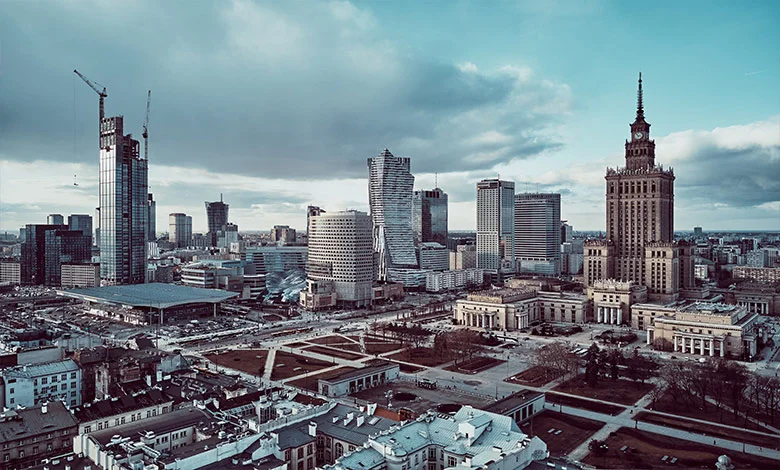
The history of Polish architecture is not far from European architecture before 1939. The separation of Polish architecture from European trends began after the Second World War, when the country had to be rebuilt after the Second World War, but also due to the Soviet influence.
Polish architecture is characterised by modern buildings designed by local and international architects. It is seen that the Polish city structure is dominated by the apartment building structure towards the city centres, while detached house architecture dominates in rural areas and areas away from the city centres.
Max Berg, one of the famous architects of Polish architecture, designed the Centennial Hall between 1911 and 1913 to commemorate the 100th anniversary of the liberation war against Napoleon Bonaparte in 1813. Jadwiga Grabowska-Hawrlyak, one of the famous Polish female architects, was active between 1954 and 1993 and played an important role in the repair of Wroclaw’s buildings destroyed after World War II.
What are the Historical Monuments to See in Poland?
Historical monuments that must be seen in Poland are listed below.
- Wawel Cathedral: Wawel Cathedral, one of the Roman Catholic churches of Poland, is only one of the historical monuments in the city of Krakow for more than 900 years. Wawel Cathedral has hosted the coronation ceremonies of past rulers,
- Wieliczka Salt Mine: Wieliczka Salt Mine, located near the city of Krakow, is one of the oldest salt mines in the world. It has hosted many marriage ceremonies in the past. People without claustrophobia visit this salt mine, which is 327 metres deep, with interest,
- Auschwitz – Birkenau Concentration Camps: The Auschwitz – Birkenau concentration camp, established by Nazi Germany during the Second World War, is located in the village of Monovitz in the city of Krakow. Approximately 1.3 million Jews were murdered in Auschwitz – Birkenau Concentration Camp during the Second World War. Today, it is protected by UNESCO and is used as a Jewish cemetery, museum and memorial site,
- Bialowieza Forest The Bialowieza forest, listed as a world heritage site by UNESCO, is one of the most important and famous nature parks in Poland.
- Warsaw Old Town: Another of the tourist attractions in Warsaw, a city of Poland, is the Old Town of Warsaw. The old city has survived from the 13th century to the present day and was taken under protection by UNESCO in 1980,
- Malbork Castle Malbork Castle, shown as the largest castle in the world, is the symbol of Poland. The castle with classical medieval architecture is thought to have been built in 1406. In 1997, it was taken under protection by UNESCO,
- Krakow Cloth Hall: Krakow Cloth Hall, which welcomes many tourists with its architectural structure from the Renaissance period, is now used as a museum,
- St Mary’s Basilica: St. Mary’s church, originally built in 1220, was destroyed by the Tatars and later rebuilt as a basilica, it is also possible to watch the city view in the basilica, which fascinates people with its wooden carvings,
- Wilanow Palace: Wilanow Palace, thought to have been built in 1677, is one of the most important examples of baroque architecture. The palace has been home to the royal family for a long time,
- Jasna Gora Monastery: Jasna Gora Monastery, one of the holy spots of Poland, is a monastery that serves as a cross and shrine for the Polish people, and the Nobel Peace Prize received by the Polish president Lech Waesa in 1983 is also located in this monastery,
- Planty Park The 19th-century Planty Park is located in the city of Krakow on an area of 20 thousand square metres with many monuments, fountains and landscape structures,
- Lazienki Palace Lazienki palace, which has the largest park in Warsaw, is located on an area of 76 hectares. The palace, built in the 1600s, is described as the most beautiful structure of the city at that time,
- Warsaw Uprising Museum: During the Second World War, the Warsaw Uprising against Nazi Germany to recapture the city is now on display with documents and evidence in the Warsaw Uprising Museum,
- Wroclaw Old Town Square: The 13th-century Old Town Square is home to the gothic-style town hall,
- Krakow Barbican Krakow Barbican, which is now used as a museum, was used as a police station and control point in 1400 years.
Polish architecture is the centre of attention of many tourists today and fascinates its buildings. The gothic and modern works of Polish architecture are still standing despite the occupation of Nazi Germany during the Second World War.
What are the transport conditions in Poland?
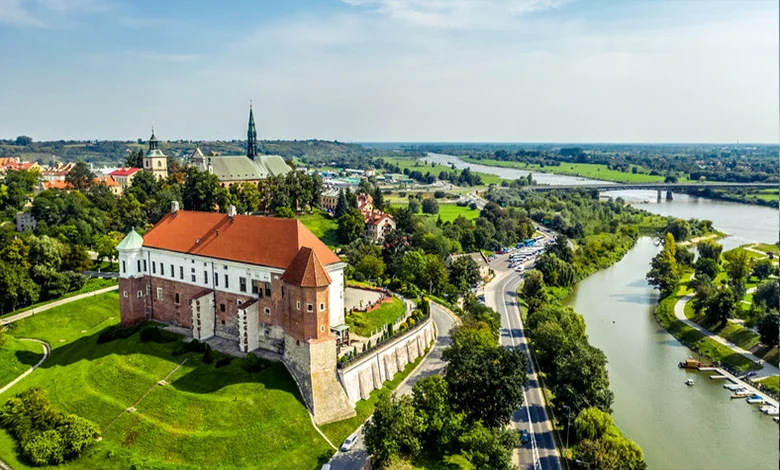
Many Polish cities have advanced public transport. Bus, tram, trolleybus, metro and train are generally used for Polish transport.
Average transport fares in Poland can be seen in the table below.
TYPE OF TRANSPORT PRICE
One-way ticket (city bus or tram) PLN 3.40 (student tariff PLN 1.70)
Subscription ticket. 100 PLN
Taxi opening fee. PLN 6.50
Taxi 1 km. PLN 2.20
Fuel (1 litre). PLN 4.56
The vehicles used for transport in Polish cities are generally buses and trams. Transport fares in Warsaw, the capital of Poland, are the same as in other cities.
How is Intercity Transport in Poland?
Intercity transport in Poland is usually done by bus and train; depending on preference, airline and sea transport can also be used.
Intercity transport prices by bus in Poland vary between 3 USD – 10 USD.
Intercity transport prices by train in Poland vary between 15 USD – 30 USD.
Is There Traffic in Poland?
There is little traffic in Poland. Although there is little traffic throughout Poland, there is traffic in Warsaw, the capital of Poland. According to the 2015 report by NUMBEO worldwide, Poland ranks 36th among 59 countries according to traffic congestion.
Below are some of the causes of traffic in Poland.
Accidents
Pedestrians
Careless drivers and untrained drivers,
Other.
How is Education in Poland?
The Polish education structure has met in common with the education systems in European countries due to the fact that Poland is located in the European Union and the European continent.
Nursery education in Poland is for children between the ages of 6 months and 3 years. Children attending nursery school in Poland can stay in the nursery school for up to 10 hours and when they reach the age of 6, they are obliged to attend primary school.
Primary school education in Poland lasts 8 years and is compulsory for all children.
High school education in Poland is divided into 3 categories.
High school (4 years)
Vocational school (3 years),
Professional technical school (5 years).
People who want to study at university in Poland have the right to go to Poland according to the recognition system. People who want to study university in Poland must apply for a Polish education visa and receive an invitation letter from a Polish university.
People who want to study undergraduate education in Poland can register for Polish language schools in order to receive preparatory education.
The world ranking of the best universities in the top 1000 in Poland is given below.
Jagiellonian University is ranked 261st,
Adam Mickiewicz University is 549th,
University of Warsaw is ranked 321st,
Warsaw University of Science and Technology is ranked 583rd,
Medical University of Warsaw is ranked 681st,
University of Wroclaw is ranked 692nd,
Medical University of Lodz is ranked 714th,
Poznan Medical University is ranked 725th,
University of Silesia ranked 762nd
Lodz University of Technology779th place,
Silesian University of Technology ranked 813th,
Gdansk University of Technology ranked 834th,
University of Lodz ranked 837th,
University of Gdansk ranked 851st,
Wroclaw Medical University is ranked 861st.
What is the Economy in Poland?
The Polish economy has the eighth largest economy among the European Union countries. Since 1990, Poland has pursued a policy of economic liberalisation and was the only EU economy to escape recession during the 2007-2008 economic crisis.
Poland is classified as a high-income economy by the World Bank and the Polish economy is made up of 62.3% services, 34.2% industry and 3.5% agriculture sectors.
Poland’s most exported products are machinery, electronic equipment, furniture, plastic products and vehicles. On 29 September 2017, according to FTSE Russell, Poland’s economy was upgraded from emerging to developed market status.
According to the 2020 IMF report, per capita income in Poland is USD 15,304. According to the Polish Government Comtrade data, Poland exported 251.8 billion USD and imported 246.6 billion USD in 2019. Poland is the average of European countries in terms of cost of living.
What is the Climate of Poland?
In Poland, the summer months are hot and rainy and the winter months are cold and rainy. Rain and snow are frequently seen in Poland’s climate characteristics. In Poland, it rains a few days a week in the summer months and in the winter months, snowfall starts in November and continues intermittently until March.
The average temperature in Poland in June is between 18 degrees and 20 degrees, and the average temperature in January is between -5 degrees and -2 degrees. Poland is known for its climate characteristics with cold winters and mild summers.
In the lowland areas of Poland, the average rainfall averages between 480 mm and 650 mm, while in the high mountainous regions it reaches up to 1020 mm. The highest temperature of the Polish climate was measured as 40.2 degrees on 29 July 1921 and the lowest temperature was measured as -41.0 degrees on 11 January 1940.
What is the Geography of Poland?
Poland has an area of approximately 312,667 km². Poland’s Baltic Sea coast is approximately 525 km long. Poland generally consists of plains. Except for the Carpathian Mountains that define the southern borders of Poland, the height of Poland is approximately 300 m above sea level.
The geography of Poland is generally between the mountains defining the border with the Czech Republic and the Odra and Vistula rivers flowing into the Baltic Sea; there are the Karkonsze Mountains in the south-west and the Carpathian Mountains in the south.
The mountains in Poland run parallel to the sea and converge in the Tatra Mountains, the highest point of which is the 2503 m high Rysy Hill.
What is the structure of Polish society?
The official language of the Polish Government is Polish. Poland is home to 37.97 million people on average. According to the latest WHO report published in 2018, the average life expectancy in Poland is 73.8 years for men, 81.6 years for women and 77.8 years for total life expectancy.
Poland’s literacy rate (for people over 15 years of age) is 99.8 per cent for men, 98.7 per cent for women and 99.8 per cent for the whole population. The population of Poland consists of 18.4 million men and 19.6 million women.
What is the Entertainment Culture in Poland?
Poland is generally a religious country and Polish citizens show a special interest in Christmas and Easter holidays. In Poland, where museums and various heritages are located, various exhibitions are also held for people interested in history. The Jagiellonian fair, one of the largest festivals in Lublin Poland, attracts hundreds of people every year in August.
There is also a colourful event called Wesele Kurpiowskie for theatre enthusiasts in Poland. For people whose idea of entertainment is nightclubs, there are dozens of nightclubs in Poland. There are many sports halls and arenas for people who want to do sports or watch competitions in Poland. It is important to spend time together for Polish culture.
Why Poland?
The reasons to settle in Poland are given below.
Poland is above average according to the Human Development Index and is among the developed countries in terms of living conditions.
The Polish economy has the 8th largest economy among EU countries.
Poland is one of the favourable countries in Europe in terms of living standards and costs,
Poland is one of the few countries in the world in terms of architectural and artistic works that shed light on history,
Poland’s city structure intertwined with nature is suitable for nature lovers,
There are cultural events and festivals organised every year in Poland,
Poland’s literacy rate is above the world average,
Poland’s unemployment rate is 6.3 per cent,
Poland’s employment rate is above 60 per cent,
The average life expectancy in Poland is 77.8 years,
How Much is the Romanian Minimum Wage 2024
What is the South Korea Minimum Wage 2024
How Much is the Minimum Wage in Germany 2024
What is The Minimum Wage in Austria 2024
Turkey Minimum Wage 2024 Dollars
👉How Much is the Minimum Wage in Belgium 2024




